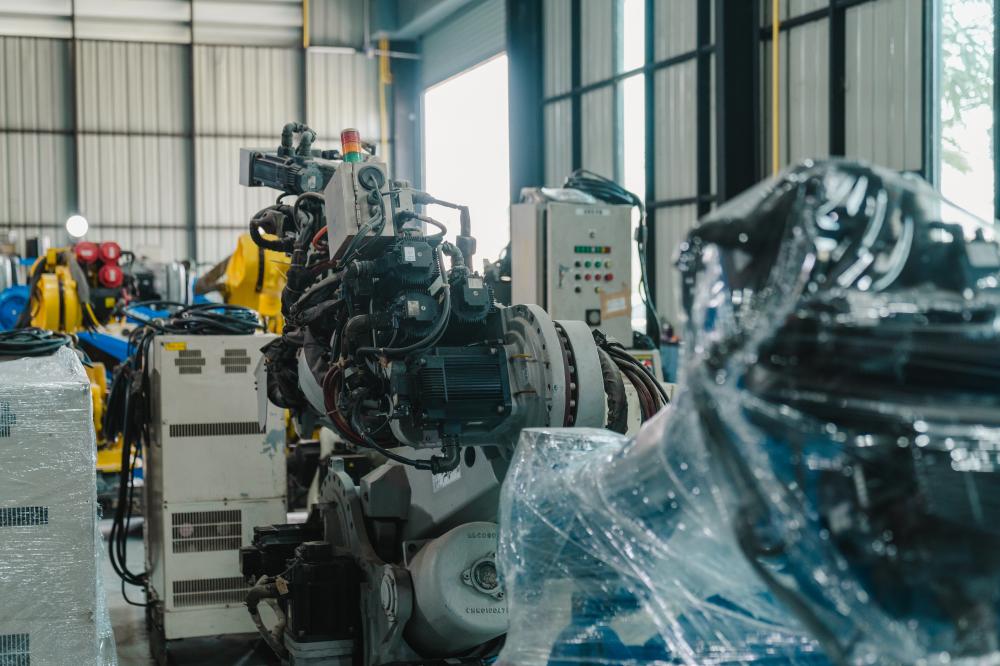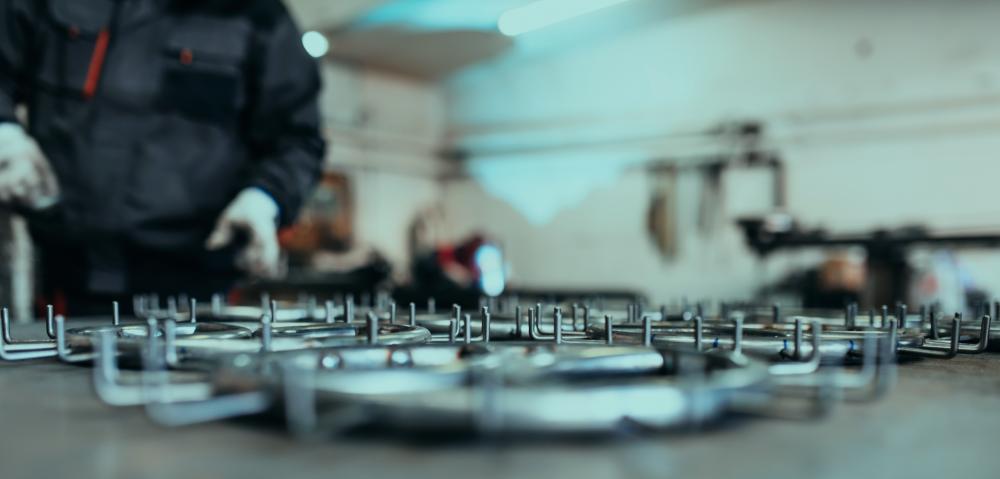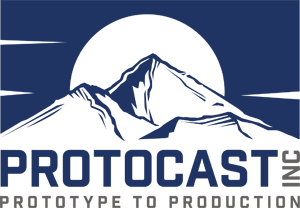October 15, 2024 | Protocast Inc
Low Pressure Die Casting Kentucky

Overview of Low Pressure Die Casting
At Protocast Inc., nestled in Commerce City, CO, we’ve mastered the art of low pressure die casting. This process, pivotal for producing high fidelity, detailed components, plays a crucial role in the manufacturing landscape, especially for industries like Aerospace, Automotive, and even Consumer Products. Low pressure die casting is a technique where molten metal is injected into a die at low pressures, around 0.7 bar, which allows for precise control over the casting’s quality and detail.
Why Choose Low Pressure Die Casting
The reason low pressure die casting stands out in our array of casting services is its unparalleled ability to yield high-quality, detailed components. The process, designed for efficiency, minimizes material wastage and is ideal for medium to high-volume production runs. The gentle injection of molten metal into the die preserves the integrity of the cast, reducing the occurrence of porosity and ensuring a superior surface finish.
From my professional experience, I’ve witnessed firsthand how this method supports the creation of complex geometries and thin-walled parts better than many other casting processes. This precision is especially beneficial for components that demand tight tolerances and high-performance qualities, common in the aerospace and automotive sectors.
Advantages of Low Pressure Die Casting
Precise Control
The essence of low pressure die casting lies in its ability to fill the die cavity in a controlled manner. This meticulous control over metal flow leads to high-quality castings with minimal defects, a trait we at Protocast Inc. take pride in. By reducing oxide formation and preventing porosity, we ensure our castings meet the strict standards required by our diverse clientele.
Flexibility in Design
Our team leverages low pressure die casting to produce parts with complex geometries and intricate details. The suitability of this process for creating axially symmetrical parts, such as car wheels, to components requiring sand cores for hollow sections, highlights its versatility. This adaptability makes it a preferred choice for innovating and meeting unique customer specifications.
Efficient Production
Another aspect where low pressure die casting shines is in its production efficiency. The method’s ability to rapidly produce parts without sacrificing quality makes it a cost-effective solution for both prototypes and full-scale production. The integration of automation in this process further enhances its efficiency, making it a go-to for many industries.
Applications of Low Pressure Die Casting
Low pressure die casting has a broad range of applications, particularly in fields demanding precision and durability. It’s been instrumental in the automotive industry for producing lightweight, structurally sound components such as wheels, engine parts, and transmission cases. In aerospace, we’ve applied this method to manufacture critical high-strength, low-weight structural parts. Its application is not limited to these sectors; consumer electronics, agricultural machinery, and medical devices also benefit from the high-quality components produced by low pressure die casting.
Optimizing Low Pressure Die Casting Process
Optimization of the low pressure die casting process involves several key factors, beginning with mold design. At Protocast Inc., our team focuses on designing molds that facilitate efficient metal flow and cooling, significantly affecting the overall quality of the final product. We also prioritize selecting the right materials and closely monitoring the casting parameters to maintain consistency across production batches.
Another crucial aspect is the post-casting treatments, including heat treatment and surface finishing processes that improve the mechanical properties and aesthetic appeal of the castings. By paying close attention to these details, we ensure that every casting delivered to our clients exemplifies the highest standards of quality and performance.
Challenges and Solutions in Low Pressure Die Casting
Despite its many advantages, low pressure die casting is not without its challenges. One of the main issues we encounter is managing thermal gradients throughout the casting process. Uneven cooling can lead to defects, such as shrinkage porosity or warping. Our approach to overcoming this involves sophisticated thermal management techniques, including the use of cooling channels in the molds and carefully calibrated heating of the molten metal.
Another challenge is the maintenance of the equipment. The low pressure die casting machines and the molds themselves are significant investments, and maintaining them in top condition is crucial for optimal operation. Regular maintenance routines and the prompt addressing of any issues ensure the longevity of our equipment and the continuous production of high-quality castings.
The Future of Low Pressure Die Casting
Looking ahead, the future of low pressure die casting is bright, driven by advancements in technology and a growing demand for lightweight, high-strength components. At Protocast Inc., we’re excited about the possibilities that new materials and improved process controls offer for enhancing the capabilities of low pressure die casting. Our commitment to staying at the forefront of industry innovations ensures that we continue to meet the evolving needs of our clients.
As we look to the future, our focus remains on optimizing our processes, exploring new applications, and embracing technology that allows us to push the boundaries of what’s possible with low pressure die casting. This dedication not only benefits our company but also contributes to the advancement of the industries we serve.
Why Protocast Inc. Excels in Low Pressure Die Casting
At Protocast Inc., our journey with low pressure die casting is a testament to our commitment to excellence and innovation. Through continuous improvement, embracing challenges, and leveraging our extensive experience, we’ve established ourselves as leaders in the casting industry. Our expertise in low pressure die casting is just one aspect of our dedication to providing superior quality and service to our clients.
Choosing us as your casting partner means benefiting from a team that values precision, quality, and efficiency. We understand the nuances of low pressure die casting and are adept at customizing solutions to meet the specific needs of our clients. Our track record of success, combined with our forward-looking approach, makes Protocast Inc. the ideal partner for all your casting needs.

What is the minimum pressure for die casting?
When it comes to low pressure die casting, the minimum pressure used to inject molten metal into the die is typically around 0.7 bar. This notably lower pressure, compared to other casting methods, allows us at Protocast Inc. to have precise control over the quality and detail of the components we produce. It’s all about striking the right balance to ensure that the molten metal fills the die cavity uniformly, avoiding turbulence and the potential for porosity or inclusion defects. Think of it like pouring syrup onto pancakes – the gentler and more controlled the pour, the more evenly it spreads, capturing every nook and cranny perfectly.
What are the benefits of low pressure die casting?
The benefits of low pressure die casting are numerous, starting with the ability to create high-quality, detailed components with exceptional surface finishes. This process greatly reduces material wastage, making it not just efficient, but also cost-effective for medium to high-volume productions. Another significant advantage is the ability to produce complex geometries and thin-walled parts, which is immensely beneficial in industries such as aerospace and automotive, where precision and performance are paramount. It’s like having a precision tool in your arsenal – invaluable for meeting specific, often stringent, design requirements.
Which is better low pressure die casting or sand casting?
The choice between low pressure die casting and sand casting really boils down to the specific requirements of the project. Low pressure die casting offers superior surface finish and dimensional accuracy compared to sand casting, making it ideal for components that need fine details and tight tolerances. On the other hand, sand casting is more adaptable for larger components and can be more cost-effective for lower volume productions. Think of it as choosing between a scalpel and a broadsword – each has its own application where it excels the most.
Which type of metal is commonly used in low pressure casting?
Aluminum is the metal most commonly used in low pressure die casting. Its popularity stems from its excellent properties, such as light weight, high strength, and good corrosion resistance, making it ideal for a wide range of applications, from automotive components to consumer electronics. Aluminum’s low melting point also makes it highly suitable for the low pressure die casting process, ensuring smooth flow into the die and resulting in high-quality castings. It’s similar to choosing the right ingredient for a recipe to ensure the best possible outcome.
How is the low pressure die casting process optimized?
Optimizing the low pressure die casting process involves a multifaceted approach at Protocast Inc. It begins with the meticulous design of the molds to ensure efficient metal flow and cooling, which is critical for achieving the desired quality in the final product. Material selection and precise control of casting parameters like temperature and pressure are equally vital to maintain the consistency and integrity of the castings. Additionally, post-casting treatments such as heat treatment and surface finishing play a crucial role in enhancing the mechanical properties and aesthetic appeal of the castings. Imagine it as fine-tuning a high-performance engine; every adjustment must be precise to achieve the optimal performance.
Resources
- North American Die Casting Association (NADCA) – The NADCA website provides valuable information on die casting processes, materials, and industry news.
- American Foundry Society (AFS) – AFS offers resources on foundry technology, including die casting, for professionals in the industry.
- ASM International – ASM International is a professional organization for materials scientists and engineers, offering resources on metallurgy and materials processing.
- Society of Automotive Engineers (SAE) – SAE provides technical resources and standards for the automotive industry, including information on casting processes.
- American Institute of Aeronautics and Astronautics (AIAA) – AIAA offers resources on aerospace technology and materials used in the industry, including casting processes.


